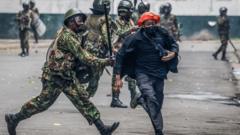The Sinaloa Cartel, a major player in the illegal drug trade, is currently battling internal conflict and external crackdowns from both Mexican and U.S. governments, signaling potential upheaval within its structure.**
The Sinaloa Cartel Faces Internal Strife Amidst Government Pressure**

The Sinaloa Cartel Faces Internal Strife Amidst Government Pressure**
Turmoil in one of the largest drug syndicates as internal betrayal complicates operations and increases scrutiny.**
The Sinaloa Cartel, recognized as one of the most powerful and feared drug trafficking organizations globally, is grappling with severe challenges amidst a government crackdown and internal discord following an act of betrayal by a prominent leader's son.
As the cartel has been at the forefront of fentanyl production, its influence in the U.S. drug market has been substantial, contributing to a national crisis. However, recent developments have put this notorious crime syndicate in a precarious position, marked by significant financial losses and casualties in their ranks.
Analysts suggest that the current internal turmoil, intensified by external pressures from Mexican and U.S. authorities, may herald a significant transformation, if not the demise, of the cartel in its traditional operational form.
Key questions arise: What exactly is the structural composition of the Sinaloa Cartel? What triggered the ongoing internal strife? Who are the rivals capitalizing on this turmoil? And how are the two governments responding to curb its influence? Observers are keenly watching who might emerge victorious from this violent contention.
The mythos surrounding figures like Joaquín "El Chapo" Guzmán continues to reshape perceptions of the cartel, yet the stark reality on the ground suggests that the power dynamics are shifting, potentially rewriting the future of organized crime in Mexico and beyond.




















